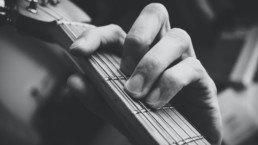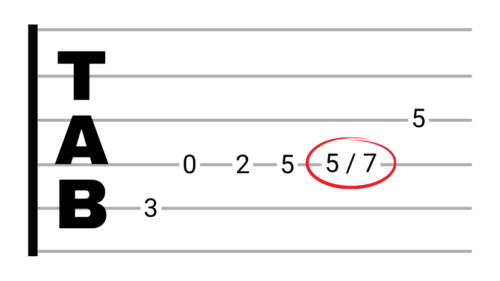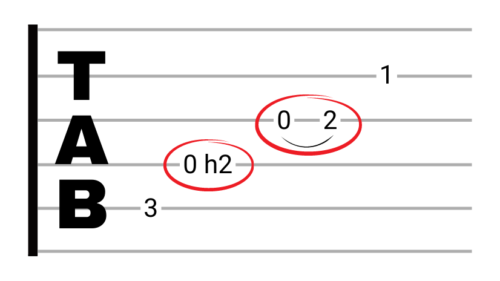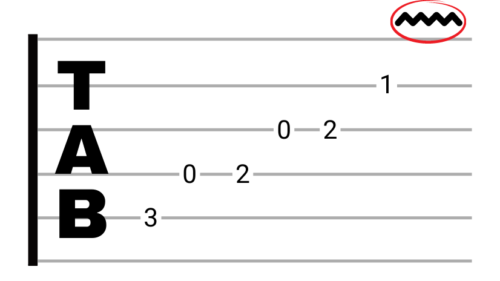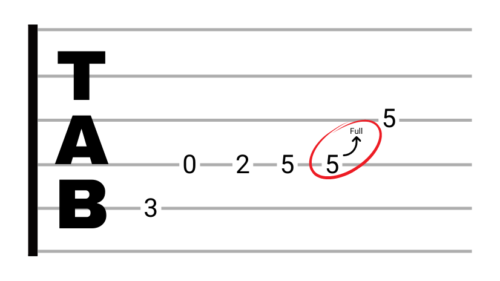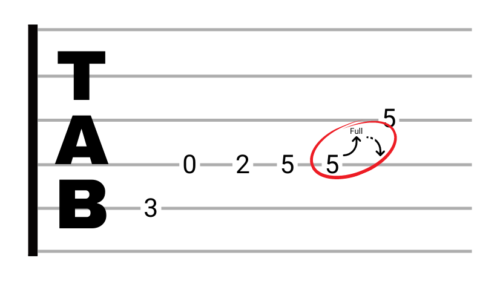How To Read Guitar Tab - A Beginner's Guide
Starting to play guitar is (almost) always a daunting task. It’s very normal to feel discouraged by the difference in skill level between you and some of your favorite players. But there are plenty of tried and true tools that can help you tackle the learning curve. One of the most helpful tools for guitarists is tablature, or ‘tab‘ for short, which is a way of transcribing instrument fingerings instead of musical pitches. And, contrary to popular belief, tabs are not a modern invention to help lazy guitar players. Tablature has been around since the 14th century, was popular during the Baroque and Renaissance periods, and was used to learn many different instruments. So feel no shame when checking out guitar tabs for your favorite songs, regardless of your level of playing!
Today we’ll be showing you how guitar tabs can be interpreted. So, without further ado, let’s learn how to read guitar tabs!
The Basics of Guitar Tab
Before we dive into the symbols that notate different guitar techniques, let’s get the very basics out of the way. As we mentioned, tabs display fingerings on a guitar rather than musical notes. Here’s what to expect when looking at tab:
The Lines
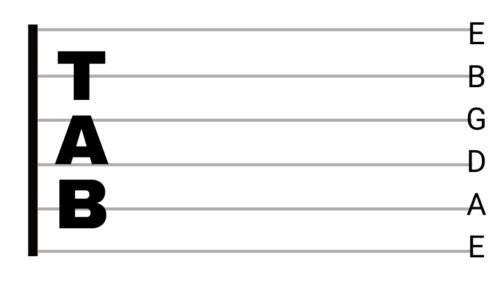 Guitar tab gives us a crude timeline displaying the strings in descending order of pitch. In the tab pictured above, you can see the top line represents the high E string (if in standard tuning), while the bottom line represents the low E string. We should note that many popular songs feature alternate tunings and the use of a capo. This information will usually be provided in the beginning of guitar tab sheets alongside the key and tempo of the song.
Guitar tab gives us a crude timeline displaying the strings in descending order of pitch. In the tab pictured above, you can see the top line represents the high E string (if in standard tuning), while the bottom line represents the low E string. We should note that many popular songs feature alternate tunings and the use of a capo. This information will usually be provided in the beginning of guitar tab sheets alongside the key and tempo of the song.
The Numbers
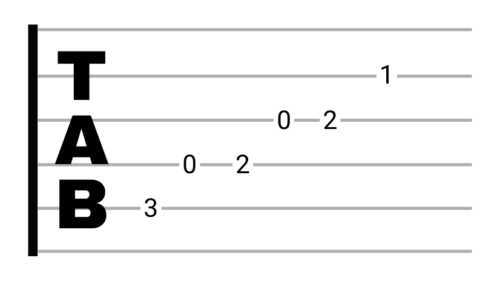 The most valuable information we get from guitar tabs is where to place our fingers. Fingerings for guitar parts are notated by numbers, which tell us which fret to hold in order to play the right notes, and in which order. Above is an example of a single-note line that outlines the C major pentatonic scale. The first number that appears is a “3” on the fifth line down. So, to play this note, we would place a finger on third fret of the fifth string. The next number is a “0” on the fourth line from the top. “0” always represents a note that is not fretted, so we would play this by striking the open fourth string. But, what if notes are played at the same time? The image below illustrates how we notate chords, or multiple notes played simultaneously.
The most valuable information we get from guitar tabs is where to place our fingers. Fingerings for guitar parts are notated by numbers, which tell us which fret to hold in order to play the right notes, and in which order. Above is an example of a single-note line that outlines the C major pentatonic scale. The first number that appears is a “3” on the fifth line down. So, to play this note, we would place a finger on third fret of the fifth string. The next number is a “0” on the fourth line from the top. “0” always represents a note that is not fretted, so we would play this by striking the open fourth string. But, what if notes are played at the same time? The image below illustrates how we notate chords, or multiple notes played simultaneously.
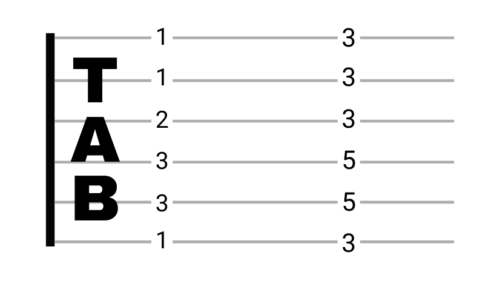 Since we read guitar tabs sequentially from left to right, any time you see notes that are directly in line with each other vertically, this means they are played simultaneously. This tab notates an F major barre chord (the chord being played in the image near the top of this blog) followed by a G minor chord.
Since we read guitar tabs sequentially from left to right, any time you see notes that are directly in line with each other vertically, this means they are played simultaneously. This tab notates an F major barre chord (the chord being played in the image near the top of this blog) followed by a G minor chord.
Other Common Guitar Tab Symbols & Notations
Now that we’ve covered the very basics, it’s time to look at some other symbols you’ll encounter when learning your favorite songs.
Slashes & Sloping Lines
When learning a lead guitar part or solo, it’s common to come across forward or back slashes. These indicate there is a slide between notes. If you see a smaller number followed by a “/” or upward sloping line, and then a larger number (as seen above), this mean you should slide up from the lower fret to the higher one. You’ll slide down when the first number is larger and there is a “\” or downward sloping line in between.
‘H,’ ‘P,’ & Legato Ties
In music, the term “legato” refers to notes being strung together without space between them. In other words, legato happens when the end of one note is immediately followed by the start of another. We achieve this on the guitar by using hammer-ons and pull-offs. In guitar tabs, this is notated two different ways. You will either see two notes separated by an “h” (for hammer-on) or a “p” (for pull-off), or you will see a tie between notes regardless if they’re to be a hammered-on or pulled-off. In the image above, notice how two hammer-ons in the same position are notated different ways.
Wavy Lines
The term “vibrato” refers to the rapid oscillation in pitch when sustaining a note. This is not to be confused with a trill, which is a rapid succession of hammer-ons and pull-offs between two notes. You’ve likely seen vibrato in action if you’ve watched any blues guitar players shake a note during a solo; this is one of the most expressive techniques available to guitar players. We notate vibrato in guitar tabs by displaying a wavy line above the staff and the note that should be played with vibrato. Reading the tab above, only the final C note should be played with vibrato.
Curved Arrows
Curved Arrows in guitar tab signify a string bend. And, accompanying the arrow is usually the word “Full” or the fraction “1/2.” When the word, “Full” appears, the note is intended to be bent up a whole step, or the equivalent of two frets. This is the case with the image above.
In this next case, there is a second arrow that points downward. The second arrow lets us know the note should be un-bent to its original position after reaching the desired interval of the bend. These notations are very common if you’re reading guitar tab for blues, country, and rock music.
Although there are other symbols you’ll come across when reading guitar tabs, the ones we’ve listed here are the most common. We hope this helps you get a head start on learning your favorite songs on guitar. Happy playing!
For an ever-growing library of Song Lessons complete with guitar tab, check out JamPlay.com! JamPlay has over 450 guitar courses from 120+ instructors, and online guitar lessons tailored to every skill level, music genre, and playing style. Click here to learn more.
Share this
Become a JamPlay member for unlimited access to 7000+ guitar lessons and 120+ artists and instructors. View membership plans ›

